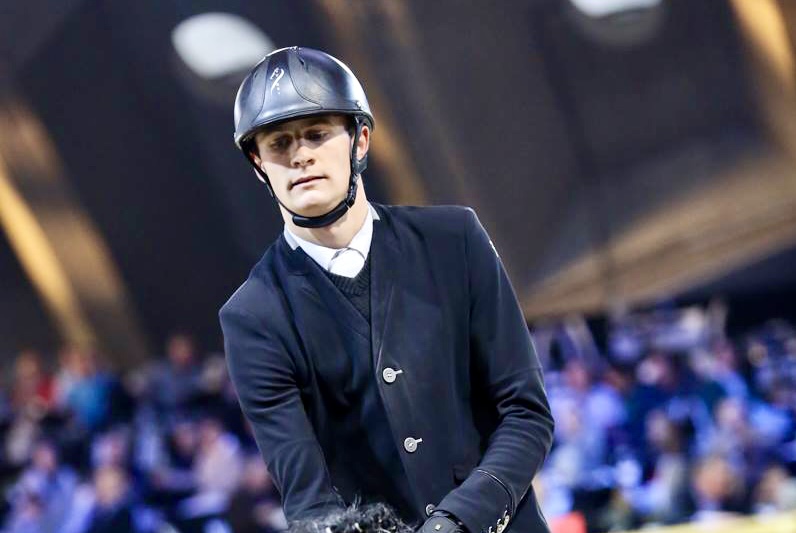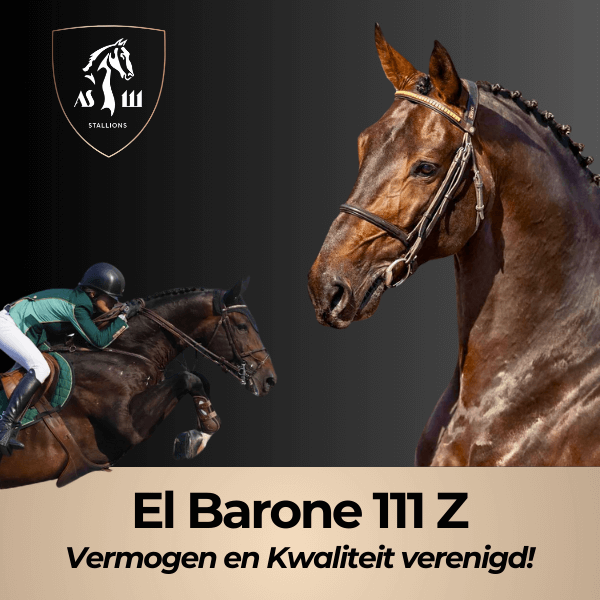Jeroen De Winter (27) is the third generation of Netehof, where around ten foals are born each year and where young horses are trained. In 2018, Jeroen became world champion with the six-year-old Mystique van ’t Hoogeinde. He was 16 when he became Belgian champion with Gretel S in the 7-year-old category. He trained his stallions Leandro VG and Pegase van ’t Ruytershof to international level.
ALSO READ: Choose right, ET / ICSI-OPU or ... ?
"Most young horses come from our stud farm. Although my dad also dares to buy young horses. Especially if they are offspring of our stallions Leandro VG and Pegase van 't Ruytershof. Our foals are out in the pasture during the summer. In winter, they go in groups of 4 to the loose boxes and spend three to four hours every day in the paddock. Because exercise is very important. In the winter of their third year, we start breaking them in.
We don't judge our foals. Since we have our own stallions and selected mares, we are biased. We intentionally paired a certain stallion with a certain mare and we're already fond of the combination before the foal is born. And when it's born, we still love it. Logical, isn't it? We only make a first, cautious assessment at three years old when they are being broken in.
If time permits, which is usually not the case, we let the horses free jump as two-year-olds. If you do that, you need to consistently make time for it. Letting a two-year-old free jump in the midst of other activities doesn't say much. You take it out of the group, which is stressful, the horse is distracted, calling out to its buddies, and not paying attention at all. You can see the movement and the jump, although you also have to consider the mindset of your two-year-old. You get an idea, but we don't judge. When breaking them in, we really take our time. It goes very calmly. We teach them to lunge step by step. First with a halter, then with a bit, then with side reins. That way, you gradually build up until there's a saddle on them and they get to know the rider in the saddle. That's a process that takes around 6 weeks, after which they can go back to the pasture."
Coming out in the pasture or the paddock every day
"From the age of 4, the real training usually begins. Although that depends on the horse. A big lazy one, for example, might spend another summer out in the pasture. The horses get introduced to some training courses and are ridden under saddle about three times a week. It remains important for the horses to come out every day. Depending on the weather and the season, that can be the pasture or the paddock."
"Because each horse needs a customized training, it's difficult to prescribe a general rule. What's more important is that you know and feel your horse. The nine-year-old Paulien DH recently came second in the CSI 2* GP of Lier. When she was seven, she placed 5th at the World Championship in Zangersheide. Yet she was only broken in at the age of five. As a four-year-old, she grazed in the pasture with her foal."
Living together is about respect
"Last year we didn't see Jeroen De Winter in the circuit. In the preceding years, he was present. 'The circuit is a grateful circuit because young horses learn a lot from it. Not least because of the environmental factors. They get acquainted with transportation, with unfamiliar horses, new sounds, and unknown atmospheres. That's an important part of their learning process and something you can't teach at home. Living together is about respect. Between rider and horse, but also among horses during transportation or in the paddock. All these aspects might be more important for young horses than the 90cm hurdles they have to jump. In the ring, they learn their way through the course. Such a trial isn't physically demanding. At least if your horse doesn't come stressed out of the truck.'"
"Nothing is obligatory with a young horse, but if you do something, you need to take your time for it. You should never lose sight of that. Every new step should be taught in peace and relaxation. I'll never ride for victory with young horses. Depending on their level of schooling, I might cut corners or shorten lines in a course during the second phase. But only if my horse reacts adequately to my aids. It's not me, but my horse who determines that."
A horse needs to trust his rider
"A young horse should be guided in every step so it gains confidence in its rider. The first requirement in that process is patience, Jeroen knows: 'That's the most important learning process for the rider. And it's a separate skill. There are many international riders to whom you shouldn't give a four-year-old. Everyone has their job, but for young horses, you need a lot of patience and you should never demand too much of them. A young horse should be guided in every step so it gains confidence in its rider. The rider should, in turn, be attentive to the signals of their horse so they can react proactively. A young horse will always test its rider. You have to catch those signals, and you only learn that by working with young horses. Many young riders who apply to us mainly want to compete with six- and seven-year-olds. That's not how it works. New employees at Netehof go through the entire process from lunging, breaking in to the first jumps. Only then you understand a horse, pick up its signals, and can anticipate them. And you can form an objective judgment about a horse.'"
I dislike quick judgements
"I dislike riders who quickly judge a horse. Because it's often based on incomplete and/or incorrect information. Nowadays, it's fashionable to label every horse. Those prejudices are usually based on nothing. Conversely, you should approach every young horse without any bias and bring out the best in it. You can only improve a horse if you believe in it. What is a good horse? A horse that makes its rider/handler happy. And when does that happen? When you approach your horse positively. Not all horses become top horses. That's reserved for the top of the iceberg. Below that is the vast majority that happily coexists with humans. At least if that human looks at their horse in a positive and constructive way."
source: Zadelkamer/Paardensport Vlaanderen








